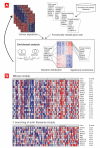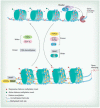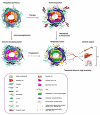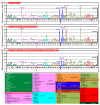Precision targeted therapy of ovarian cancer
- PMID: 27746277
- PMCID: PMC5191987
- DOI: 10.1016/j.jconrel.2016.10.014
Precision targeted therapy of ovarian cancer
Abstract
The review is aimed at describing modern approaches to detection as well as precision and personalized treatment of ovarian cancer. Modern methods and future directions of nanotechnology-based targeted and personalized therapy are discussed.
Keywords: Genetic profiling; Nanotechnology; Personalized medicine; Targeted therapy; siRNA.
Copyright © 2016 The Authors. Published by Elsevier B.V. All rights reserved.
Figures















References
-
- Ferlay J, Shin HR, Bray F, Forman D, Mathers C, Parkin DM. Estimates of worldwide burden of cancer in 2008: GLOBOCAN 2008. Int J Cancer. 2010;127:2893–2917. - PubMed
-
- Siegel RL, Miller KD, Jemal A. Cancer statistics, 2015. CA Cancer J Clin. 2015;65:5–29. - PubMed
-
- A.C. Society . Ovarian Cancer. Vol. 2015. American Cancer Society; 2014.
-
- Loeb KR, Loeb LA. Significance of Multiple Mutations in Cancer. Carcinogeneis. 2000;21:379–385. - PubMed
Publication types
MeSH terms
Grants and funding
LinkOut - more resources
Full Text Sources
Other Literature Sources
Medical

